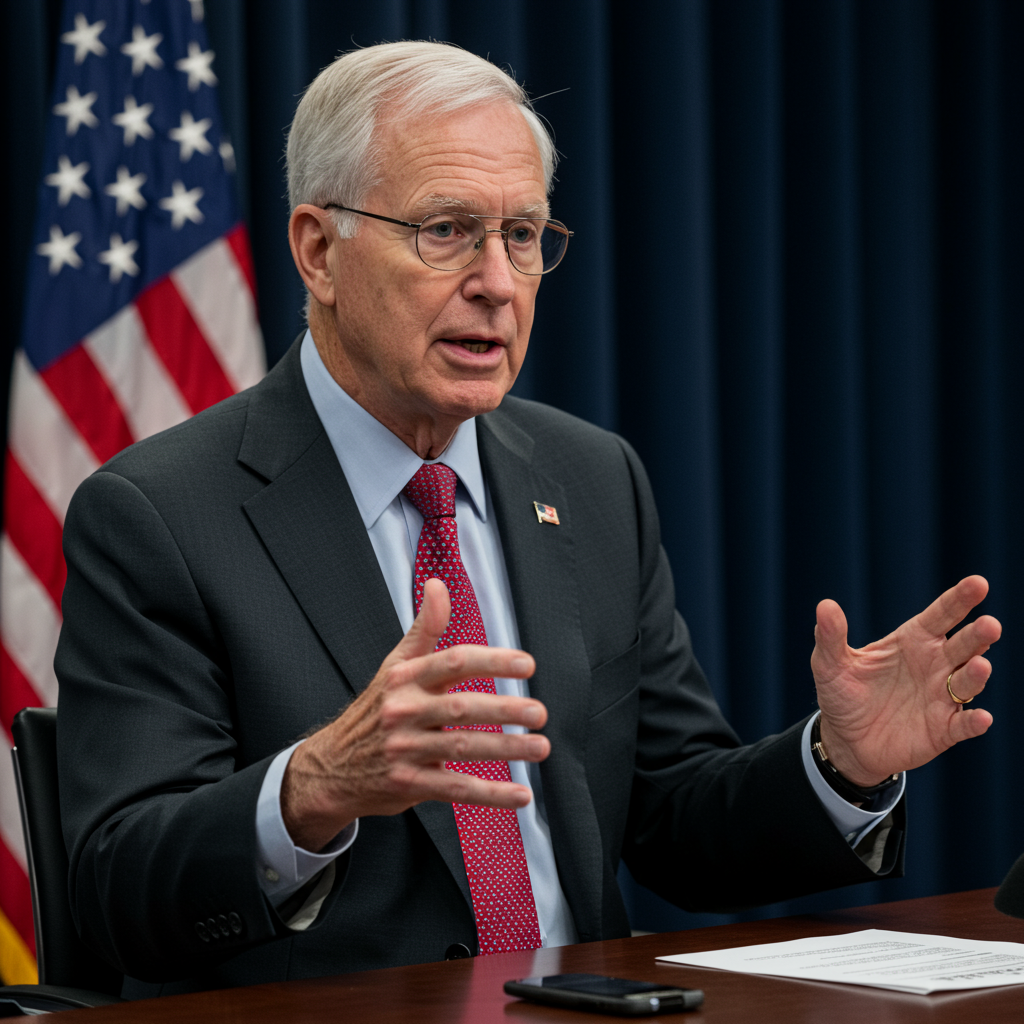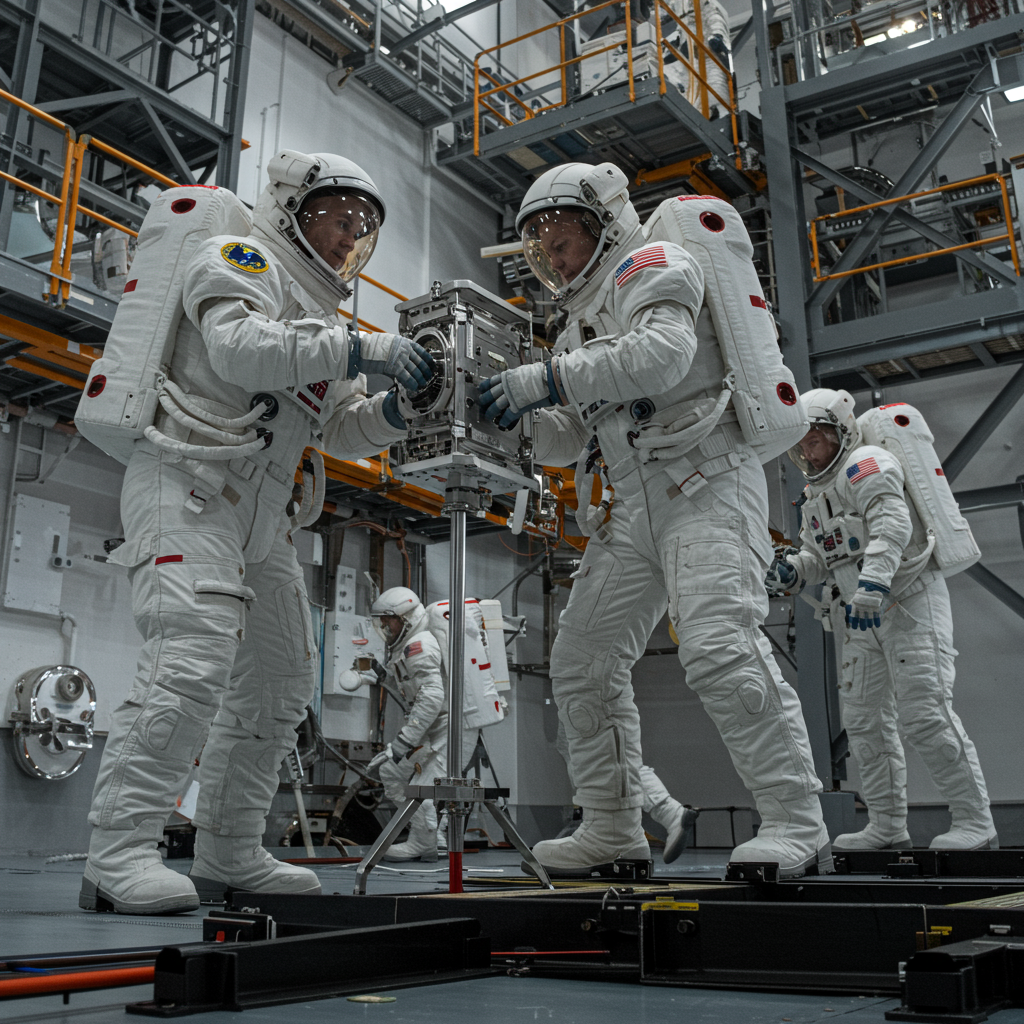proposed budget cuts are casting a shadow over NASA’s future trajectory. Former Administrator Bill Nelson warns the space agency risks becoming “crippled” if drastic reductions are implemented as suggested. These potential cuts target vital science missions, major programs like Artemis, and international collaborations. The situation is sparking widespread concern about America’s leadership in space exploration and scientific advancement.
Nelson, who led NASA from 2021 to 2025, voiced his concerns sharply. He stated the agency is “being savaged” by the proposed budget. If current plans proceed, he believes NASA will be severely weakened.
A Dire Warning for NASA’s Trajectory
Bill Nelson did not mince words when discussing the potential impact of the proposed budget. He described the cuts as deeply damaging. Nelson warned that continuing on the current path would leave NASA a “crippled agency.” His alarm highlights the significant threat perceived by some former leaders.
Using a strong analogy, Nelson compared the cuts to “eating our seed corn.” This phrase implies sacrificing future growth and capability for short-term savings. He argued such cuts would undermine NASA’s fundamental mission. That mission, as defined by statute, includes the search for life. Understanding our place in the universe is a core purpose that could be jeopardized.
Unpacking the Proposed Budget Reductions
The proposed Republican budget outlines substantial cuts to NASA’s funding. It suggests reducing the agency’s annual budget significantly. The proposal aims to cut the budget from $24.9 billion down to $18.8 billion. This represents a considerable decrease in resources for the space agency.
Specific areas face severe targeting under this plan. The proposal calls for slashing as much as half of NASA’s science funding. It also recommends terminating missions deemed “unaffordable.” Additionally, the budget suggests cutting what are termed “woke” education programs. A shift towards a “more sustainable, cost-effective approach to lunar exploration” is also mandated.
Target Areas for Funding Reduction
These proposed reductions are not uniform across the agency. Science programs appear particularly vulnerable. A 50 percent cut could devastate ongoing and planned research. The focus on “unaffordable missions” likely targets high-cost flagship projects. The terminology around “woke” education programs indicates a political dimension to the proposed cuts, aiming to redirect or eliminate certain outreach and diversity initiatives.
The Administration’s Rationale: Cutting Costs and Shifting Gears
The Trump administration argues that these proposed budget reductions are necessary. They frame the cuts as a move to rein in excessive spending. Eliminating underperforming projects is another stated goal. A key objective is reorienting NASA toward more cost-efficient private partnerships. This reflects a preference for commercial space solutions over traditional government-led developments.
The White House specifically highlighted the cost of NASA’s Space Launch System (SLS). This heavy-lift rocket is designed for deep space missions. The administration claims it costs $4 billion per launch. They also state the SLS is 140 percent over budget. This massive expense is cited as justification for seeking alternatives. The budget proposes phasing out the SLS and the Orion capsule after just three flights. More cost-effective commercial systems would replace them for future lunar missions.
Shifting Towards Commercial Solutions
This strategy aligns with a broader push to rely more heavily on private companies like SpaceX and Blue Origin. The argument is that commercial providers can offer launch services and other capabilities at lower costs. This approach seeks to leverage private sector innovation and efficiency. However, critics question if commercial capabilities are ready to fully replace critical government infrastructure like SLS.
Critics Push Back: Threat to American Progress
Many, including former Administrator Nelson, strongly oppose the proposed cuts. Critics contend these reductions threaten American progress in space exploration. They also warn of significant impacts on scientific endeavor more broadly. A Democratic House staffer, speaking anonymously, described the cuts as creating “chaos.” The staffer predicted “significant impacts to our leadership in space” in comments to The Sunday Times.
Critics argue that deep cuts would erode the foundational research capabilities of NASA. This could hinder scientific discovery across various fields. Nelson’s “eating seed corn” analogy resonates here, suggesting a disinvestment in future knowledge. The core mission of searching for life and understanding our universe relies on sustained scientific funding. Reducing it by half could severely impede this critical work.
Broader Impact on Science
The proposed elimination of climate satellite projects exemplifies the potential impact on specific scientific areas. This follows previous actions during the Trump administration. Examples include changes to scientific advisory positions at the Department of Health and Human Services. There were also decreases in grants for scientific research during that period.
Programs on the Chopping Block: Artemis and Beyond
Major NASA programs face direct threats from the proposed budget. The Artemis program is central to NASA’s current strategy. It aims to return astronauts to the moon for the first time since 1972. Artemis also plans to build the Lunar Gateway, a space station orbiting the moon. This Gateway would support long-term lunar scientific exploration.
These ambitious plans are now in jeopardy. The proposed budget puts them on hold or significantly alters their path. The Artemis program, particularly its SLS component, has already required substantial investment. The new Space Launch System alone has cost more than $26 billion to develop so far. Phasing out SLS after only three flights, as proposed, would effectively discard much of this investment before the system can fully realize its potential or justify its cost.
Global Implications: Straining International Space Partnerships
NASA’s proposed budget cuts would have significant ripple effects internationally. The agency has strong partnerships with the European Space Agency (ESA). This collaboration is crucial for the Artemis program. ESA has been working with NASA and Airbus to build parts of the new rockets for the moon missions. They are also involved in the Lunar Gateway space station project.
This international collaboration represents substantial investment from Europe. ESA has already spent €840 million in payments to Airbus for their contributions. Another €650 million in future Airbus contracts were planned. As part of this partnership, three European astronauts were scheduled to participate in the new lunar mission. The uncertainty surrounding NASA’s budget now makes the future of this plan unclear. ESA leaders are reportedly considering alternative strategies.
ESA’s Potential Pivot
Daniel Neuenschwander, ESA director of human and robotic exploration, expressed Europe’s concerns. He was quoted in The Sunday Times emphasizing the need to reduce reliance on U.S. decisions. ESA is looking to increase projects done autonomously. They seek control over their own decisions. This includes exploring partnerships with countries like India and Japan. Collaboration with China is also being considered as an alternative path.
Uncertainty for Commercial Space Partners
Even commercial space exploration companies working with NASA face potential uncertainty. Elon Musk’s SpaceX is a major partner for NASA. They collaborate on various projects, including lunar exploration initiatives. However, the relationship between Elon Musk and former President Trump has been complex.
Trump publicly criticized Musk and SpaceX in the past. He even suggested terminating governmental subsidies and contracts with his companies. This was highlighted by a post from Trump on Truth Social in June. The post stated that the “easiest way to save money” was to end these contracts. While SpaceX remains a key commercial partner for NASA, the political dynamic could introduce instability. The future of SpaceX’s partnership with NASA appears somewhat uncertain under this political climate.
Differing Voices on NASA’s Path
Statements from various stakeholders highlight the diverse perspectives on NASA’s proposed budget. Acting NASA Administrator Janet Petro issued a statement in May. She acknowledged the President’s continued support for NASA’s mission. Petro noted the proposal included investments in exploration while prioritizing critical science and technology research. Her statement aimed to present a balanced view despite the proposed cuts.
The White House, in a separate May statement, was more explicit about the rationale for changes. They stated the budget “phases out the grossly expensive and delayed Space Launch System (SLS) rocket and Orion capsule.” They cited the $4 billion per launch cost and delays. Their statement reiterated the plan to replace these with “more cost-effective commercial systems.” These systems, they argued, would support “more ambitious subsequent lunar missions.” This contrasts with Nelson’s view that the cuts cripple the agency. It presents the cuts as a strategic shift towards efficiency.
The Road Ahead: Congressional Debate and the Oct 1 Deadline
The proposed budget is not the final word on NASA’s funding. It is a request from the administration. This request must be debated and approved by Congress. Lawmakers hold the power to modify or reject the proposed cuts. The deadline for this congressional debate and decision is October 1.
The outcome remains uncertain. Senator Ted Cruz, chair of the Senate Commerce Committee, oversees NASA’s budget. He has previously expressed support for the Artemis program. His position could influence the final budget outcome. While the administration proposes deep cuts, congressional support for key programs like Artemis could temper the final reductions. The political negotiations in Congress will ultimately determine NASA’s financial future.
Frequently Asked Questions
What specific budget cuts has the Trump administration proposed for NASA?
The Trump administration’s proposed budget seeks to reduce NASA’s annual funding from $24.9 billion to $18.8 billion. This cut represents a significant decrease. Key targets for reduction include slashing up to half of NASA’s science funding. The proposal also calls for terminating missions deemed too expensive and suggests eliminating certain education programs. It aims to shift resources towards more cost-effective commercial partnerships for lunar exploration.
Which major NASA programs are most threatened by the proposed budget reductions?
The Artemis program, aiming to return humans to the moon and build the Lunar Gateway station, faces significant threats. The budget proposes phasing out the expensive Space Launch System (SLS) and Orion capsule after just three flights, impacting the core vehicle for Artemis. Climate satellite projects are also specifically mentioned for elimination. Broader science funding cuts could jeopardize a wide range of research missions and initiatives across different scientific disciplines within NASA.
How could these proposed NASA budget cuts affect international space collaborations?
NASA’s partnerships with agencies like the European Space Agency (ESA) could be severely impacted. ESA has invested significantly (€840M spent, €650M planned) in collaborating on the Artemis program, including building rocket components and contributing to the Lunar Gateway. Cuts that delay or terminate these programs could leave ESA’s investments stranded. This uncertainty could prompt ESA and other international partners to seek collaborations with different nations, potentially reducing future joint projects with the United States.
The Future of American Space Exploration Hangs in the Balance
The debate over NASA’s budget is more than just numbers; it’s about the direction of American space exploration and scientific leadership. Former Administrator Bill Nelson’s stark warning underscores the potential severity of the proposed cuts. While the administration argues for efficiency and a shift to commercial partners, critics fear irreversible damage to critical programs, scientific capabilities, and international standing.
The fate of programs like Artemis, vital scientific research, and key international collaborations now rests with Congress. The political negotiations leading up to the October 1 deadline will be crucial. The outcome will determine whether NASA continues on its current path of ambitious exploration and discovery or faces a future where its capabilities are significantly diminished, potentially ceding ground to other nations in the global space race.
Word Count Check: ~1180 words




